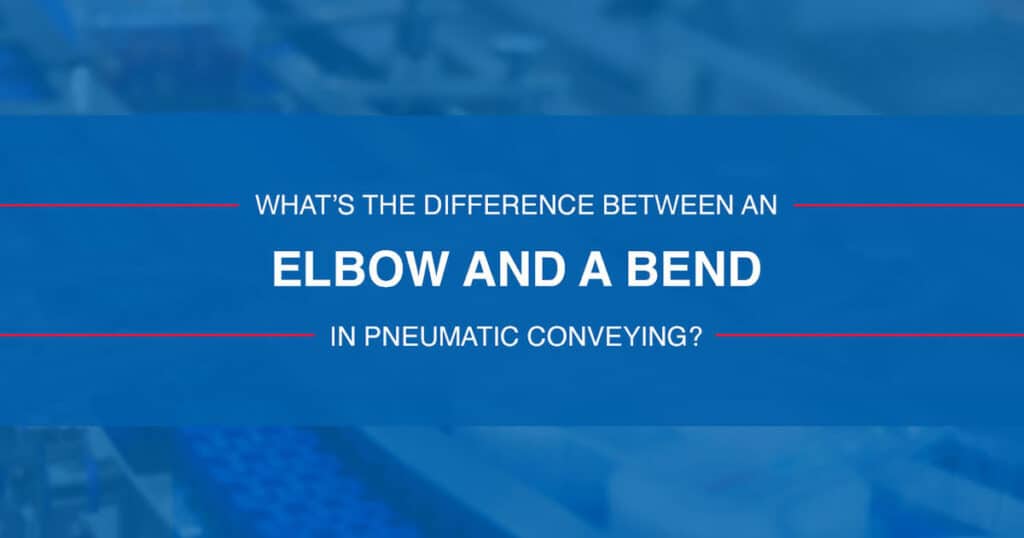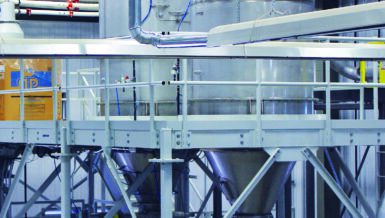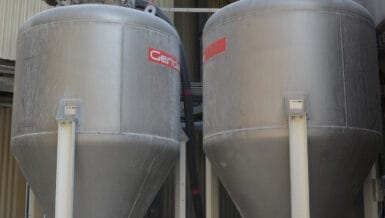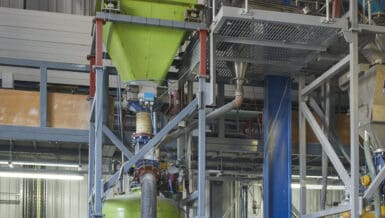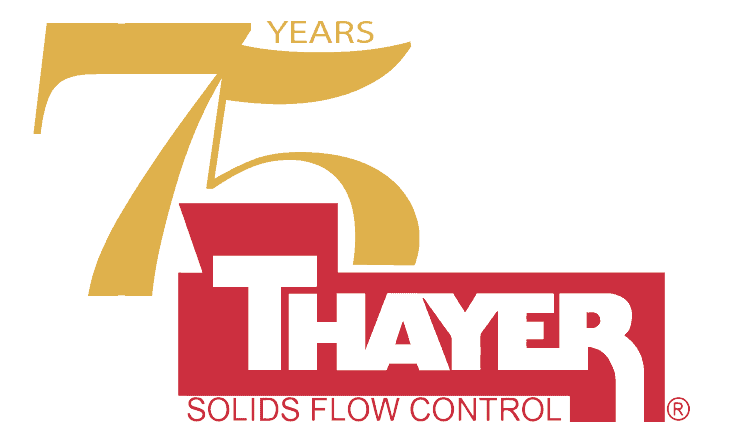This function is also crucial to gradually changing the direction of the bulk solid particles being conveyed. However, these components aren’t the same thing. Continue reading to understand the difference between a weld elbow and a sweep elbow in pneumatic conveying systems.
What Type of Elbow in Pneumatic Conveying?
Pneumatic conveying elbows are a type of bend used to connect straight sections of pipe. Pneumatic conveying elbows are available in a variety of options. For example, ceramic coated elbows can be used to protect the component against abrasion, extending its lifespan. Additionally, elbows can be manufactured from many different materials, including aluminum, carbon steel, galvanized steel, and stainless steel.
In general, there are four types of elbows used in pneumatic conveying:
- Long radius (LR) elbows: These are the most common type of elbows used because they allow for a smoother flow material. Any elbow with a centerline radius that’s longer than 10x its outer diameter is considered an LR elbow.
- Short radius (SR) elbows: While these are generally cheaper to install than LR elbows, they provide a sharper bend, which can increase friction while conveying. SR elbows also have smaller radii (2.5-4x the outer diameter).
- Vortex elbows: Also known as impact elbows, these are specifically designed to withstand abrasion and mitigate product degradation using mechanical means. They’re a short fitting-style elbow that include dead-end tees. Despite their benefits, these elbows aren’t suitable for conveying materials with a high moisture content.
- Weld Elbows (and weld fittings): These elbows are cast or forged fittings. Their specifications conform to a weld fitting industry standard. They come in their own version of SR where the centerline radius is 1X the nominal diameter, and a version of LR where the radius is1.5X the nominal diameter. Weld elbows are usually not used in pneumatic conveying because all radii are too tight by the standards of pneumatic conveying.
What’s a Pipe Bend in a Pneumatic Conveying System?
So, while weld elbows are pre-made fittings that are designed to be butt-welded into a system, a pipe bend is created from a curved piece of tubing by a specialized machine. “Bend” is a general term that refers to the action of curving the pipeline in order to change its direction.
While conveying pipe elbows have standards, they are usually manufactured based on the specific needs of the customer. This means that their outer diameter, wall thickness, material type, degree of bend, and centerline radius are specified by the customer so that the bend integrates seamlessly into their existing system.
Here’s a brief overview of different types of bend designs for pneumatic conveying systems:
- Common-radius bends: This is the category that SR and LR elbows fit into, as well as long-sweep bends. Here, the radius of curvature ranges from 3 to 24 D (where D is the diameter of the pipe)..
- Common fittings: These include tee bends, mitered bends, and elbows, with the blind tee bend being the most widely used.
- Specialized bends: These include innovative or bespoke designs. Specialized bends also include elbows that have been optimized against wear, such as those with a wearback design (e.g. Ceram-Back® elbows).
5 Differences Between Weld Elbows and Pipe Bends
The most important difference between a weld elbow and pipe elbow is that every bend in a system is an elbow but not every elbow is a pipe bend.
Weld elbows are a specific type of bend that have been manufactured to industry standards and must comply with a set range of specifications, while pipe elbows are usually bent to fit a specific system or design.
“Elbow” is the overarching term that refers to all types of bends. It’s similar in concept to the difference between whiskey and bourbon, in that all bourbon is whiskey, but not all whiskey is bourbon.
Here are five differences between an elbow vs bend:
- Weld elbows have to comply with weld-fitting standards for size, angle, and radius of bends. Pipe bends do not.
- Pipe bends are manufactured from curved tubing, giving them a consistent design. Meanwhile, weld elbows are forged or cast.
- Due to their generally longer centerline radius materials flow more smoothly through pipe bends than they do through weld elbows.
- Weld elbows are pre-made whereas pipe bends are typically bespoke-made.
- Weld elbows have a smaller curvature radius, ranging between 1-1.5 D, while the curvature radius for bends is much larger, usually starting at 3 D.
With all this in mind, choosing the right elbow or bend for your pneumatic conveying system is crucial to your operations. Talk to one of our experts today for professional advice on how to find the solution for your specific needs.




